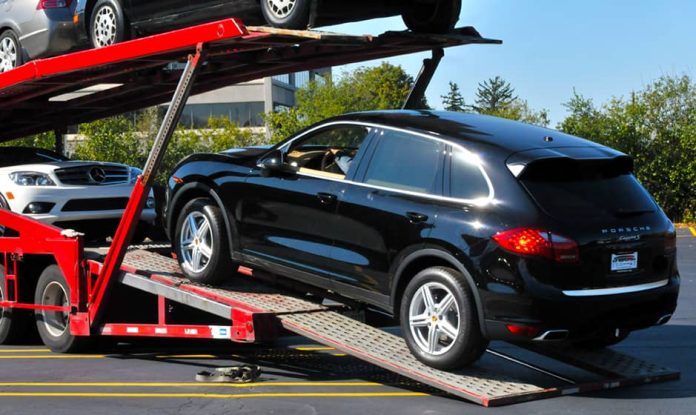What to Expect with Cross-Country Car Shipping
Shipping your vehicle across the country can feel like a daunting task, but with the right preparation and understanding of the process, cross-country car shipping can be a smooth and stress-free experience. Whether you’re relocating, buying a car from another state, or moving for work, knowing what to expect during the long-distance auto transport process will help you navigate it with confidence.
In this article, we’ll walk you through everything you need to know about the car transport journey, from how the process works to what you should prepare for before shipping your vehicle across the country.
1. Choosing a Cross-Country Car Shipping Method
When shipping your car across the country, you’ll have two main options for transport: open car transport and enclosed car transport. Each method has its own benefits, and the choice depends on your vehicle type and budget.
- Open Car Transport: This is the most common and cost-effective method of cross-country car shipping. Your vehicle is loaded onto an open trailer along with several other cars. While your car will be exposed to the elements like rain, dust, and road debris, it’s a safe option for most standard vehicles.
- Enclosed Car Transport: For high-value, classic, or luxury cars, enclosed car transport provides added protection. Your vehicle is transported in a covered trailer, shielding it from weather and potential road hazards. This method is more expensive but offers maximum protection during the long-distance journey.
Most people shipping standard vehicles opt for open transport, while those with high-value cars often choose enclosed shipping for the added peace of mind.
2. Getting Quotes and Booking the Service
The first step in your car transport journey is to gather quotes from several auto transport companies. Most reputable companies offer free, no-obligation quotes online. When requesting quotes, provide accurate details about your vehicle, pick-up and delivery locations, and your preferred shipping dates.
- Compare quotes: Prices for long-distance auto transport can vary based on the company, route, and time of year. Comparing quotes from multiple companies ensures you get the best deal.
- Ask about additional services: Some companies offer services like expedited shipping, guaranteed pick-up, or door-to-door service. If you need your car shipped quickly or have specific pick-up/delivery requirements, these options may be worth the additional cost.
- Confirm insurance coverage: Make sure the transport company offers sufficient insurance coverage to protect your vehicle during the journey. If needed, consider purchasing additional coverage.
Once you’ve chosen a company, you’ll book your shipping date. If you’re working with a flexible schedule, you may be able to choose a broader pick-up window, which can lower costs.
3. Preparing Your Vehicle for Transport
Before your car is loaded onto the transport trailer, you’ll need to prepare it for shipping. Proper preparation helps ensure a smooth process and minimizes the risk of damage during transport.
Here’s what you need to do:
- Clean your vehicle: Give your car a thorough wash so you can easily identify any pre-existing damage. Dirt or dust can obscure scratches, dents, or other issues that need to be documented before shipping.
- Take photos of your car: Take clear, dated photos of your vehicle from multiple angles, including close-ups of any existing damage. These photos will be essential if you need to file a claim for damage that occurs during shipping.
- Remove personal items: Auto transport companies typically don’t allow personal items to be left in the car during shipping. Remove all belongings, including electronics, loose items, and any custom accessories that could be damaged or stolen.
- Check for leaks and mechanical issues: Ensure your car is in good working order before shipping. Check for fluid leaks, make sure the tires are properly inflated, and top off the gas tank to about a quarter full (enough for loading and unloading but not too heavy).
4. Pick-Up and Transport
When the day comes for your vehicle to be picked up, the transport driver will contact you to confirm the pick-up time. Depending on the type of service you’ve chosen (door-to-door or terminal-to-terminal), the driver will either come directly to your location or to a pre-arranged terminal.
- Inspection at pick-up: Before loading your vehicle onto the trailer, the driver will perform a thorough inspection and document any existing damage. You’ll be asked to sign a Bill of Lading, which serves as a contract and inspection report for your vehicle’s condition before transport.
- Tracking your car’s journey: Many transport companies offer tracking services, allowing you to monitor your vehicle’s progress during its cross-country trip. This feature provides peace of mind and helps you stay informed about the estimated arrival time.
Your car will then be loaded onto the transport truck, and the car transport journey begins. Depending on the distance and route, cross-country shipping can take anywhere from 5 to 10 days.
5. Delivery and Inspection
Once your car reaches its destination, the driver will contact you to arrange the delivery. If you’ve chosen door-to-door auto transport, the car will be delivered to your specified address, or as close as possible based on accessibility. If you’ve opted for terminal-to-terminal shipping, you’ll need to pick up your vehicle from a designated terminal.
- Inspect your car upon delivery: Before signing off on the delivery, carefully inspect your vehicle for any damage that may have occurred during shipping. Use the photos you took before shipping to compare the condition of your car. If you notice any new damage, document it immediately and report it to the transport company.
- Sign the Bill of Lading: After completing the inspection, you’ll sign the Bill of Lading to confirm that the vehicle was delivered in good condition (or note any damage). This document is essential if you need to file a claim for any issues that occurred during transport.
6. Cost of Cross-Country Car Shipping
The cost of cross-country car shipping depends on several factors, including the distance of the journey, the size and weight of your vehicle, and the shipping method you choose (open or enclosed transport). Additionally, time of year and fuel costs can affect pricing.
- Average cost: On average, shipping a car across the country can cost anywhere from $800 to $1,500 for open transport and $1,500 to $3,000 for enclosed transport, depending on the specific circumstances.
To get the best price, it’s important to compare quotes, book in advance, and be flexible with your shipping dates when possible.
Cross-country car shipping is a convenient and reliable way to transport your vehicle, but it’s essential to understand the process and what to expect. From choosing the right shipping method to preparing your car for transport and inspecting it upon delivery, being informed will ensure a smooth and stress-free long-distance auto transport experience. By following these guidelines, you’ll be well-prepared for your car transport journey, ensuring your vehicle arrives safely at its new destination. Search for insurance that is right for your needs.








